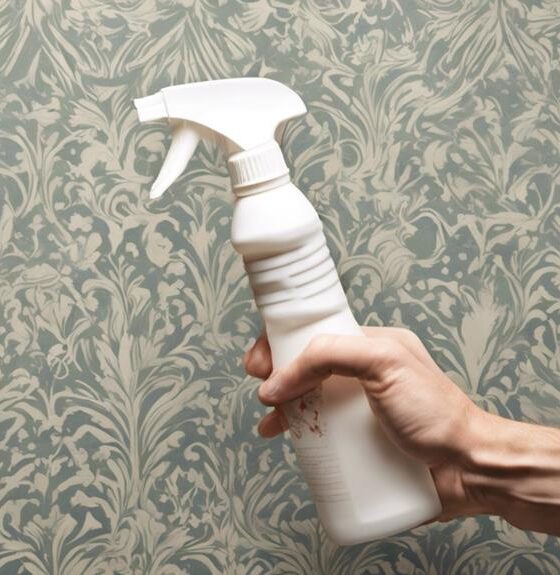Retreat
What Is the Downside of Spa

We’ve all heard the saying ‘all that glitters is not gold.’ Well, the same goes for spas. While they may seem like a luxurious escape, there are downsides that often go unnoticed.
From the financial burden of expensive treatments to potential health risks and negative effects on our skin and hair, spas aren’t all they’re cracked up to be.
In this article, we’ll explore the hidden drawbacks of spas and shed light on the less glamorous side of pampering ourselves.
Key Takeaways
- Spa treatments can be a financial burden, making it difficult for many people to afford regular visits and prioritize self-care.
- There are potential health risks associated with spa treatments, such as bacterial infections, allergic reactions, and chemical exposure.
- Certain spa treatments can have negative effects on the skin and hair, including increased sensitivity, dryness, and vulnerability to sun damage.
- Spa practices can have a negative environmental impact, including excessive water usage and the release of harmful chemicals.
Financial Burden of Spa Treatments
We can’t deny that spa treatments can be a financial burden. Affordability concerns often deter individuals from indulging in these luxurious experiences. The cost of spa services, including massages, facials, and body treatments, can quickly add up, making it difficult for many people to afford regular visits. This financial strain can force individuals to prioritize other necessities over self-care, impacting their overall well-being.
Moreover, the high-end nature of spas and their location in upscale areas contribute to the perception that they’re only accessible to a privileged few. This exclusivity can create a sense of inequality and further exacerbate affordability concerns.
As the demand for spa treatments continues to rise, finding innovative solutions to make them more affordable and accessible to a wider range of individuals becomes paramount.
Potential Health Risks at the Spa
Let’s explore the possible health risks that can arise from spa treatments. When it comes to our well-being, it’s essential to be aware of any potential risks associated with the indulgence and relaxation we seek at the spa. Here are four health risks that may arise:
Inadequate hygiene: If proper sanitation practices aren’t followed, there’s a risk of bacterial or fungal infections. Spa facilities must ensure that equipment, towels, and surfaces are thoroughly cleaned and disinfected.

Allergic reactions: Some spa treatments involve the use of various products, such as lotions, oils, or scrubs. Individuals with allergies or sensitivities may experience adverse reactions to these substances. It’s crucial to inform spa professionals about any known allergies before undergoing treatments.
Contaminated water: Spa treatments like hot tubs or hydrotherapy involve the use of water. If the water isn’t properly maintained, it can become a breeding ground for harmful bacteria, leading to skin infections or respiratory problems.
Chemical exposure: Certain spa treatments, such as chemical peels or hair dyeing, involve the use of potent chemicals. These chemicals can cause skin irritation, burns, or other adverse reactions if not used correctly or if an individual has a pre-existing condition.
To ensure a safe and enjoyable spa experience, it’s important to choose reputable spas that prioritize hygiene, communicate any allergies or sensitivities, and follow proper safety protocols.
Negative Effects on Skin and Hair
Although spa treatments can be relaxing and rejuvenating, they can also have negative effects on our skin and hair. It’s important to be aware of these potential downsides before indulging in a spa experience.
One common negative effect is increased skin sensitivity. Certain spa treatments, such as chemical peels or laser therapies, may leave the skin more vulnerable to irritation and sun damage. It’s crucial to protect the skin with sunscreen and avoid excessive sun exposure after these treatments.
Additionally, frequent spa visits can lead to hair dryness. The heat from sauna or steam room sessions, along with the use of hot styling tools during salon treatments, can strip the hair of its natural moisture, leaving it dry and brittle. To combat this, it’s recommended to use hydrating hair products and limit the use of heat styling tools.
Environmental Impact of Spa Practices
One potential downside of spa practices is the excessive use of water, which can strain local water resources. As the demand for spa services continues to grow, it’s important for the industry to adopt sustainable practices to minimize its environmental impact.
Here are four ways in which spas can reduce their carbon footprint and contribute to a greener future:
Implement water-saving techniques: Spas can install low-flow fixtures and water-efficient equipment to minimize water consumption during treatments and facility operations.
Use eco-friendly products: By opting for organic, biodegradable, and cruelty-free products, spas can reduce the release of harmful chemicals into the environment.
Embrace renewable energy sources: Investing in solar panels or wind turbines can help spas generate their own clean energy and reduce reliance on fossil fuels.

Promote responsible waste management: Implementing recycling programs, using eco-friendly packaging, and adopting composting practices can significantly reduce the amount of waste generated by spas.
Lack of Long-Term Benefits From Spa Treatments
There are various reasons why we might not experience long-term benefits from spa treatments, but one common factor is the temporary nature of the effects. While spa treatments can provide immediate relaxation and rejuvenation, they often fail to deliver lasting results. This can be disappointing considering the financial cost and time commitment involved in regular spa visits.
| Financial Cost | Time Commitment | |
|---|---|---|
| Pros | – Spa treatments can provide a luxurious and indulgent experience. | – Taking time out for self-care can be beneficial for overall well-being. |
| Cons | – Spa treatments can be expensive, especially if done frequently. | – Regular spa visits require a significant time commitment, which may not be feasible for everyone. |
| – The cost may outweigh the long-term benefits, especially if the effects are only temporary. | – The time spent at the spa could be used for other activities or responsibilities. |
While spa treatments can be a wonderful treat, it’s important to consider the potential lack of long-term benefits. It may be worth exploring alternative wellness practices that offer more sustainable results.
Frequently Asked Questions
Are There Any Age Restrictions for Spa Treatments?
When it comes to spa treatments, age restrictions may apply depending on the specific treatment and the spa’s policies. It’s important to check with the spa beforehand to ensure that you meet any age requirements. Additionally, some treatments may have product restrictions due to safety concerns.
Can I Bring My Own Products to Use During My Spa Treatment?
Yes, you can bring your own products to use during your spa treatment. However, it’s important to consider the benefits of using the products provided by the spa, as they are specifically chosen for their effectiveness and innovation.
Are Spa Treatments Safe for Pregnant Women?
Spa treatments during pregnancy: Are they safe and recommended? Is there scientific evidence supporting their safety? Yes, spa treatments can be safe for pregnant women, but it’s important to consult with a healthcare professional and choose treatments that are specifically designed for expectant mothers.
How Often Should I Get a Spa Treatment for It to Be Effective?
We find that the frequency of spa treatments is key to their effectiveness. Regular spa treatments offer numerous benefits, such as improved relaxation, reduced stress, and enhanced overall well-being.
Do Spa Treatments Have Any Impact on Mental Health?
Spa treatments can have a positive impact on our overall well-being, including mental health. Scientific evidence supports the benefits of spa treatments in reducing stress, improving mood, and promoting relaxation.

– What Are the Potential Drawbacks of Spa Treatments?
Some reasons for pricey spa treatments may include potential drawbacks such as skin irritation or allergic reactions to products used, especially for those with sensitive skin. Additionally, there is a risk of infections from unclean equipment or improper sanitation practices. Over-reliance on spa treatments can also lead to neglect of long-term skincare habits.
Are the Downsides of Swim Spas Similar to Regular Spas?
Yes, the drawbacks of swim spas are similar to regular spas. Both require maintenance, and may lead to high energy costs. However, swim spas may have additional challenges due to their dual function as both a pool and a spa. Nonetheless, proper care can mitigate these potential issues.
Conclusion
In conclusion, while spa treatments can be a luxurious and rejuvenating experience, they also come with some downsides.
One interesting statistic to consider is that according to a study, the average cost of a spa treatment can range from $80 to $200 per session. This staggering financial burden may deter some individuals from enjoying the benefits of spa treatments on a regular basis.
It’s important to weigh the potential negatives and positives before indulging in these treatments.
- About the Author
- Latest Posts
Introducing Charles, the Editor in Chief at ByRetreat, whose passion for interior design and editorial excellence elevates every remote workspace to new heights. With his keen eye for detail, impeccable taste, and expertise in design, Charles brings a wealth of knowledge and creativity to the ByRetreat team.
As the Editor in Chief of a renowned lifestyle blog, Charles has honed his skills in curating captivating content and staying up-to-date with the latest trends in interior design. His deep understanding of aesthetics and the power of storytelling through design enables him to create remote workspaces that are not only visually stunning but also rich in personality and meaning.
Retreat Ideas
7 Creative Company Retreat Gift Ideas
Nourish team spirit and appreciation at company retreats with these 7 creative gift ideas that will elevate your experience in extraordinary ways.

When pondering potential presents for a company retreat, personalized products with a purpose can make a profound impact on participants.
As we navigate the domain of creative gift ideas, the allure of luxury items and the intrigue of team-building activities emerge as enticing options.
Stay tuned to uncover how these gifts can not only elevate the retreat experience but also foster teamwork and appreciation among colleagues in unexpected ways.
Key Takeaways
- Personalized company logo products enhance brand recognition and foster unity.
- Outdoor adventure gear boosts team exploration and bonding.
- Employee wellness kits promote well-being and relaxation.
- Interactive team-building experiences strengthen communication and collaboration.
Personalized Company Logo Products
When considering gift ideas for a company retreat, incorporating personalized company logo products can greatly enhance brand recognition and foster a sense of unity among employees. These employee gifts not only serve as a token of appreciation but also as a constant reminder of the company's values and mission. Customized items with the company logo create a unique bond among team members, promoting a feeling of belonging and camaraderie.
Furthermore, branded merchandise featuring the company logo can be a powerful tool in promoting brand loyalty and increasing employee engagement. By providing employees with personalized gifts that they can use and showcase, the company makes sure that its brand remains at the forefront of their minds. During company events and retreats, these logo products help in creating a cohesive and professional image, showcasing a unified front to clients and partners.
To summarize, personalized company logo products serve as more than just gifts; they become symbols of unity, loyalty, and pride within the company.
Outdoor Adventure Gear

Elevate your company retreat experience with essential Outdoor Adventure Gear designed to enhance your team's exploration and enjoyment of nature. When it comes to Corporate Retreat Gifts, practicality and style are key. Here are three must-have items to ponder:
- Koozie Kamp 20 Degrees Sleeping Bag: Guarantee your team stays cozy and well-rested during outdoor overnight stays with this durable and comfortable sleeping bag. It's the perfect gift to keep them warm while they bond under the stars.
- Hydro Flask Lunch Bags and Coolers: Keep your team fueled and hydrated with these practical and stylish lunch bags and coolers. They're ideal for maintaining the freshness of food and drinks throughout your outdoor adventures.
- Mini Telescope for Outdoor Exploration: Encourage a sense of wonder and discovery among your team with a mini telescope. Perfect for stargazing or observing wildlife, this gift will add an extra layer of excitement to your company retreats focused on nature and exploration.
Invest in these Outdoor Adventure Gear items to make your next retreat unforgettable and filled with team building opportunities.
Customized Team Building Activities
Let's enhance our company retreat experience by incorporating customized team building activities that foster communication and collaboration among employees. Tailoring team building activities to specific company goals and objectives can greatly improve the effectiveness of these initiatives. By customizing these activities, we can address particular challenges within the team and create a more engaging experience for employees during company retreats. Customized team building activities not only boost morale but also increase overall engagement among team members.
Interactive and engaging team building activities have the power to cultivate a sense of unity and teamwork within the company. Through these tailored initiatives, employees can develop stronger communication skills, collaborate more effectively, and build lasting relationships. By focusing on customized team building activities, we can make sure that the time spent during company retreats is both enjoyable and productive. Embracing these activities is a strategic way to invest in our team's growth and success.
Wellness and Self-Care Kits
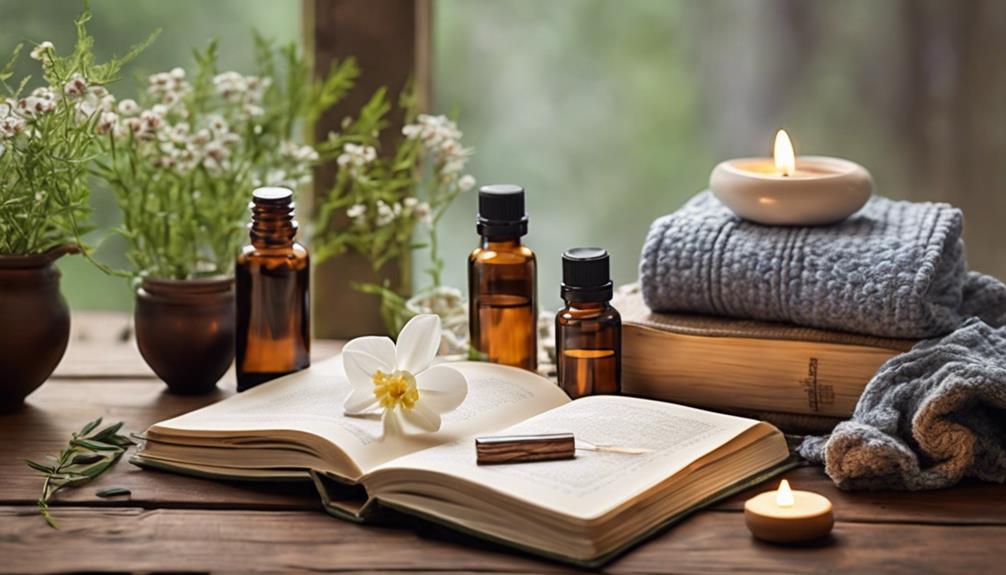
Promoting employee well-being and relaxation, wellness and self-care kits have become a popular choice for company retreat gifts. These kits offer a holistic approach to wellness, including items like candles, bath salts, vital oils, and stress-relief products, creating a tranquil experience for employees.
Here are three crucial items commonly found in wellness kits:
- Necessary Oil Diffuser: Aromatherapy can help reduce stress and anxiety, creating a calming atmosphere during virtual retreats or in the office.
- Yoga Mat: Encouraging employees to take a break and engage in some physical activity can boost morale and productivity, contributing to overall well-being.
- Fitness Tracker: Monitoring daily activity levels and promoting movement, fitness trackers can motivate employees to stay active and maintain a healthy lifestyle even during remote work situations.
These self-care products not only facilitate relaxation but also foster a positive work environment by prioritizing employee wellness and stress-relief.
Tech Gadgets and Accessories
Let's explore the latest tech trends that can elevate our retreat experience.
From useful accessories for work like portable chargers to fun gadgets for leisure such as Bluetooth speakers, there's something for everyone.
These tech gadgets and accessories are sure to enhance productivity and foster team bonding during our time away.
Latest Tech Trends
When exploring the latest tech trends in gadgets and accessories, wireless earbuds stand out as a popular choice for their productivity and convenience.
Bluetooth speakers offer high-quality sound for music enthusiasts, while portable chargers provide on-the-go charging solutions for various electronic devices.
For those seeking enhanced viewing experiences, smartphone magnifiers and projectors are excellent options. Mini telescopes cater to outdoor exploration and stargazing activities, adding a sense of wonder to any adventure.
Staying up-to-date with the latest tech trends ensures you're equipped with cutting-edge tools to enhance both work and leisure activities. Embracing these innovations can boost productivity and enjoyment in the modern world of electronic devices.
Useful Accessories for Work
Enhance your work efficiency and productivity with these must-have tech gadgets and accessories tailored for the modern professional.
Wireless Earbuds are a crucial choice, offering convenience and enhanced focus.
Bluetooth Speakers not only provide music benefits but are also great for team-building activities or relaxation sessions during retreats.
Necessary Chargers are vital for keeping devices powered up, ensuring employees stay connected even on the go.
Smartphone Magnifiers and Projectors come in handy for presentations during team-building activities.
Mini Telescopes add a fun element to outdoor exploration and team-building exercises.
Investing in these tech accessories can elevate your work experience and make company retreats more engaging and productive.
Fun Gadgets for Leisure
Amidst the hustle and bustle of work, incorporating fun gadgets for leisure can add an exciting element to company retreats and foster team bonding. Here are three must-have tech gadgets for leisure activities:
- Wireless Earbuds: Enhance productivity and focus during leisure activities while enjoying your favorite music or podcast without the guarantee of tangled wires.
- Bluetooth Speaker: Provide high-quality music benefits for relaxation and entertainment, creating a lively atmosphere during team gatherings or outdoor activities.
- Portable Chargers: Make convenient charging solutions for tech gadgets on the go, keeping everyone connected and powered up throughout the retreat.
These gadgets not only elevate leisure experiences but also promote collaboration and camaraderie among team members.
Food and Beverage Experiences

Let's tantalize taste buds with exquisite Tasting Menu Pairings and shake things up with a Mixology Workshop for a fun twist at company retreats.
These experiences not only elevate the culinary journey but also foster team bonding through shared enjoyment of delectable creations.
Including these food and beverage delights is sure to leave a lasting impression and enhance the overall retreat experience.
Tasting Menu Pairings
Curate an unforgettable culinary journey for your company retreat with Tasting Menu Pairings, where food and beverage experiences blend seamlessly to delight your team's senses. Here are three reasons why this experience is a must-have for your next retreat:
- Curated Pairings: Indulge in meticulously selected combinations like wine and cheese, craft beer and snacks, or gourmet desserts and cocktails.
- Interactive Bonding: Engage in a shared tasting experience that fosters teamwork and camaraderie among colleagues.
- Memorable Moments: Create lasting memories with unique flavors tailored to match the retreat's theme, adding a personalized touch to the event.
Elevate your retreat atmosphere and treat your team to an immersive culinary adventure that will leave a lasting impression.
Mixology Workshop Fun
Immerse your team in a dynamic hands-on experience with mixology workshops, enhancing camaraderie and creativity at your company retreat. These interactive sessions offer the perfect blend of team building and bonding, as participants get to craft cocktails while learning from skilled bartenders. The workshops are tailored to cater to diverse tastes within the group, whether they prefer mocktails, classic cocktails, or themed drinks. Picture a setting where your team is engaged in a fun and memorable experience, exchanging ideas and enjoying the art of mixology. By incorporating mixology workshops, you can create a lively atmosphere that fosters teamwork and leaves a lasting impression on your employees.
| Benefits | Description |
|---|---|
| Team Building | Craft cocktails together, enhancing teamwork skills |
| Bonding | Share a unique experience, fostering camaraderie |
| Interactive | Hands-on learning with professional mixologists |
| Tailored Experience | Customize drinks to suit diverse preferences |
Creative Team-Bonding Workshops

Engage your team in dynamic and interactive workshops that foster collaboration and strengthen bonds among team members. Team-bonding workshops are crucial for enhancing productivity, fostering creativity, and creating a positive work environment. Here are three key aspects to take into account when planning these workshops:
- Customized Activities:
Tailoring the activities to fit your team's specific needs and goals can make the experience more impactful. From trust falls to problem-solving challenges, customization guarantees that the workshop resonates with your team members, leading to better engagement and outcomes.
- Enhancing Communication:
These workshops provide a platform for team members to improve their communication skills, both verbally and non-verbally. By engaging in activities that demand effective communication, individuals learn to listen actively, express ideas clearly, and work together cohesively.
- Building Trust and Morale:
Through collaborative tasks and team-building exercises, trust is developed among team members, leading to increased morale and a stronger sense of unity. When team members trust each other, they're more likely to support one another, share responsibilities, and work towards common goals.
Frequently Asked Questions
What Should I Pack for an Office Retreat?
We should pack versatile clothing like layers and comfy shoes, along with crucial like sunscreen and water bottles. Don't forget personal items and work materials. Check for gear needed for activities. Remember a journal and camera for memories!
How Do I Prepare for a Company Retreat?
We plan meticulously for the company retreat, ensuring every detail is perfect. From scheduling activities to organizing transport, we leave no stone unturned. Our goal is to create a memorable experience for all attendees.
What Is Another Name for a Staff Retreat?
Another name for a staff retreat is a corporate retreat or team-building retreat. It's a gathering of employees outside the workplace for team bonding and professional development. These events focus on enhancing teamwork, communication, and morale.
What Happens at a Company Retreat?
At a company retreat, we engage in team-building activities, workshops, and relaxation. These events boost morale, foster communication, and strengthen team dynamics. They provide a break from routine, encourage creativity, and enhance employee engagement.
Conclusion
To sum up, we've explored a range of creative company retreat gift ideas to enhance the overall experience and show appreciation to employees.
These unique gifts not only cater to various interests and needs but also promote sustainability and team bonding.
By incorporating these thoughtful gifts into your retreat planning, you can elevate the experience and create lasting memories for all involved.
- About the Author
- Latest Posts
Introducing Ron, the home decor aficionado at ByRetreat, whose passion for creating beautiful and inviting spaces is at the heart of his work. With his deep knowledge of home decor and his innate sense of style, Ron brings a wealth of expertise and a keen eye for detail to the ByRetreat team.
Ron’s love for home decor goes beyond aesthetics; he understands that our surroundings play a significant role in our overall well-being and productivity. With this in mind, Ron is dedicated to transforming remote workspaces into havens of comfort, functionality, and beauty.
Spa Design
5 Luxurious Spa Designs by KCO
Discover the captivating allure of KCO Design's five luxurious spa designs, where elegance and sophistication converge to create unparalleled sanctuaries of relaxation.

Let's take a moment to appreciate the understated opulence of KCO Design's five luxurious spa designs. Each spa beckons with an air of refinement and exclusivity that promises a truly indulgent experience.
As we explore these meticulously crafted spaces, we'll uncover the artful blend of comfort and sophistication that sets KCO apart in the world of luxury spa design.
The attention to detail and innovative design elements in these sanctuaries of relaxation invite us to discover a world where pampering meets architectural finesse.
Key Takeaways
- Tranquility and nature-inspired decor for a serene spa experience
- Fusion of beauty services and urban retreat ambiance for a luxurious urban spa
- Elegance through minimalist design and meticulous curation in spa settings
- Comprehensive wellness offerings beyond traditional treatments for holistic well-being
Serene Nature Retreat Spa
Nestled amidst a verdant oasis, the Serene Nature Retreat Spa beckons with its harmonious blend of natural elements and rejuvenating ambiance. As a premier day spa, our focus is on providing a tranquil environment where guests can escape the hustle and bustle of daily life. The design philosophy of the spa revolves around incorporating earthy tones, organic textures, and nature-inspired decor to create a sense of serenity that envelops visitors from the moment they step inside.
Luxurious treatment rooms await our guests, each thoughtfully designed to enhance relaxation and promote holistic wellness. The Serene Nature Retreat Spa prides itself on offering a comprehensive wellness experience that goes beyond traditional spa treatments. From the soothing sounds of flowing water to the gentle rustling of leaves outside, every detail has been carefully curated to transport guests to a state of blissful tranquility.
Come indulge your senses and rejuvenate your mind, body, and soul at our Day Spa oasis.
Urban Oasis Spa
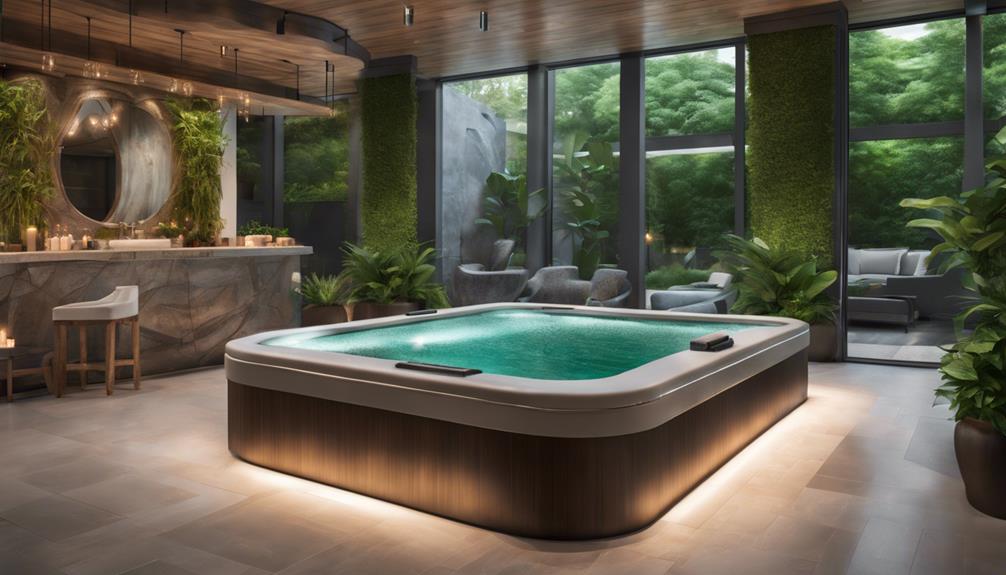
Crafting an urban sanctuary of relaxation and luxury, KCO Design presents the exquisite Urban Oasis Spa, where modern elegance meets tranquil rejuvenation. This innovative spa concept combines upscale urban design with a serene ambiance to offer clients a premium salon experience.
Here are some key features that make Urban Oasis Spa a must-visit destination:
- Chic Salon Environment: The salon area at Urban Oasis Spa exudes sophistication with its sleek design and luxurious furnishings, creating a stylish space for clients to enjoy beauty treatments.
- Cutting-edge Spa Services: Clients can indulge in a range of cutting-edge spa services, from advanced skincare treatments to bespoke hair services, all delivered with expert precision.
- Contemporary Decor Elements: Modern decor elements such as minimalist lighting fixtures and elegant botanical accents elevate the overall ambiance of Urban Oasis Spa.
- Personalized Pampering: The salon professionals at Urban Oasis Spa provide personalized consultations to ensure each client receives bespoke treatments tailored to their needs.
- Urban Retreat Experience: Urban Oasis Spa offers a tranquil retreat in the heart of the city, allowing clients to escape the hustle and bustle and unwind in a luxurious setting.
Minimalist Elegance Spa
Elevating the essence of modern luxury, KCO Design's Minimalist Elegance Spa captivates with its focus on clean lines and serene ambiance, seamlessly blending simplicity with sophistication. Neutral color palettes and natural elements infuse the space with a calming aura, while modern furnishings and minimalist lighting add a contemporary touch, creating a space that exudes luxury and tranquility. Clients stepping into the Minimalist Elegance Spa can expect a haven designed for relaxation and rejuvenation, where every detail has been meticulously curated to provide an experience of unparalleled elegance.
Luxury hair care takes center stage in this minimalist oasis, where clients can indulge in premium treatments amidst the understated yet refined decor. The harmonious blend of minimalism and sophistication ensures that every visit to the Minimalist Elegance Spa is a journey into a world of pure luxury and pampering. With a focus on delivering a serene environment that speaks of modern opulence, this spa design by KCO is a testament to the art of creating a truly luxurious experience.
Zen Garden Sanctuary Spa

The Zen Garden Sanctuary Spa envelops visitors in a serene haven of tranquility and rejuvenation, offering a luxurious escape from the demands of daily life. As we step into this oasis of relaxation, we're greeted by the following:
- A meandering stone pathway, lined with lush greenery and blooming flowers, leading us towards the heart of the spa.
- Soft, ambient music playing in the background, creating a soothing atmosphere that instantly calms the mind.
- Japanese-inspired sliding doors opening up to reveal private treatment rooms adorned with traditional tatami mats and minimalist decor.
- The gentle sound of water trickling from a bamboo fountain, adding a peaceful melody to the air.
- A fragrant aroma of essential oils and incense, subtly infusing the space with a sense of tranquility and zen.
At Zen Garden Sanctuary Spa, every detail is meticulously curated to ensure a blissful experience, where guests can unwind and rejuvenate throughout the day.
Contemporary Wellness Haven
Stepping from the tranquil Zen Garden Sanctuary Spa into the realm of the Contemporary Wellness Haven at KCO Design: Salon and Day Spa, visitors are immersed in a modern oasis of relaxation and rejuvenation. Our design ethos blends sophistication with functionality, creating an ambiance that speaks to the desires of contemporary spa enthusiasts. The sleek lines, minimalist décor, and strategic lighting in our space elevate the overall experience, setting a new standard for luxury in the salon and day spa industry.
At KCO Design: Salon and Day Spa, we prioritize the fusion of top-notch skincare, waxing, and beauty services with a chic and tranquil setting. Our commitment to excellence has earned us a reputation as one of Baltimore's premier salons, renowned for both our exceptional spa designs and services. Clients seeking a premium wellness experience flock to our doors, enticed by the promise of a luxurious haven where every detail is meticulously curated to enhance their well-being and beauty journey.
Frequently Asked Questions
What Are the Average Prices for Treatments and Services at Each of the Spa Designs by Kco?
At each of the spa designs by KCO, our pricing for treatments and services varies based on the luxurious experience and personalized care you desire. Our team ensures you receive exceptional value and indulgence.
Are the Spa Designs by KCO Available for Private Events or Group Bookings?
Are the spa designs by KCO available for private events or group bookings? Absolutely! We cater to your needs, offering exclusive experiences for gatherings of all sizes. Our luxurious spaces are perfect for creating unforgettable moments.
Do Any of the Spa Designs by KCO Offer Specialized Treatments for Specific Health Conditions or Concerns?
Absolutely, some of our spa designs offer specialized treatments for specific health conditions or concerns. We meticulously craft each experience to cater to individual needs, ensuring a rejuvenating and tailored approach to wellness.
Can Guests Customize Their Experience at the Spa Designs by KCO With Add-On Services or Amenities?
Absolutely, guests can fully customize their experience at the spa designs by KCO with a wide array of add-on services and amenities. We pride ourselves on offering a tailored and indulgent spa experience for each individual.
Are There Any Exclusive Partnerships or Collaborations With Luxury Brands at the Spa Designs by Kco?
At our spa, we curate exclusive partnerships with luxury brands to elevate your experience. For instance, we collaborate with a renowned skincare line, offering personalized treatments using their exquisite products to indulge our guests.
Conclusion
In a world of chaos and stress, these luxurious spa designs by KCO offer a sanctuary of serenity and rejuvenation. Each space is a work of art, carefully crafted to transport guests to a realm of pure relaxation and indulgence.
From the tranquil Zen Garden Sanctuary to the contemporary Wellness Haven, these designs truly embody the essence of luxury and wellness. Step into a world where every detail is a masterpiece, and let your worries melt away in pure bliss.
- About the Author
- Latest Posts
Introducing Ron, the home decor aficionado at ByRetreat, whose passion for creating beautiful and inviting spaces is at the heart of his work. With his deep knowledge of home decor and his innate sense of style, Ron brings a wealth of expertise and a keen eye for detail to the ByRetreat team.
Ron’s love for home decor goes beyond aesthetics; he understands that our surroundings play a significant role in our overall well-being and productivity. With this in mind, Ron is dedicated to transforming remote workspaces into havens of comfort, functionality, and beauty.
Spa Design
Creating a Luxurious Spa Backyard Design
Discover the blissful world of opulent spa backyard design, where tranquility meets extravagance, promising a haven of relaxation and indulgence.

As we explore the realm of luxurious spa backyard design, we stumble upon a realm of tranquility and indulgence where every element is meticulously curated for ultimate relaxation.
Picture this – a serene oasis right in your backyard, where the stresses of the day melt away effortlessly.
But how does one transform a simple outdoor space into a lavish spa retreat that rivals those of high-end resorts?
Let's uncover the secrets to crafting a truly opulent sanctuary where you can unwind and rejuvenate in style.
Key Takeaways
- Incorporate hot tubs, ambient lighting, and comfortable seating for a luxurious spa experience.
- Enhance the ambiance with decorative fountains, lush greenery, and colorful flowers.
- Create cozy spaces with plush seating, string lights, and a fire pit for warmth.
- Ensure privacy and relaxation through wooden structures, privacy screens, and trellises.
Spa Backyard Design Elements
In crafting our luxurious spa backyard design, we infuse it with a symphony of elements that tantalize the senses and transport us to a sanctuary of relaxation and rejuvenation. Our outdoor space is adorned with the finest features, including soothing hot tubs that beckon us to unwind after a long day. To ensure privacy, we strategically place privacy screens around the spa area, offering a secluded oasis where we can fully immerse ourselves in the natural beauty that surrounds us.
Ambient lighting casts a gentle glow, creating a serene ambiance that invites us to linger and enjoy the peaceful atmosphere. Comfortable seating provides the perfect spot to lounge and soak in the tranquility of our spa retreat. Water elements such as fountains and waterfalls add a touch of elegance and tranquility to the space, further enhancing the overall sense of relaxation.
For those sunny days, shading options like pergolas or umbrellas offer protection from harsh UV rays, allowing us to bask in the beauty of our outdoor sanctuary without worry. With these elements harmoniously combined, our spa backyard design is a true haven for rest and rejuvenation.
Water Features and Plantings

As we continue to shape our luxurious spa backyard design, the integration of captivating water features and vibrant plantings emerges as a pivotal element in creating a sensory oasis of tranquility and natural beauty. Incorporating water features like decorative fountains or soothing ponds adds a touch of elegance and relaxation to the space. Picture a graceful fountain gently bubbling in the corner, its soothing sounds harmonizing with the rustling of leaves in the breeze.
Surrounding the spa with lush greenery, colorful flowers, and fragrant herbs enhances the overall ambiance, appealing to all senses. Imagine vibrant blooms bursting with hues of pink, purple, and white, their sweet scents wafting through the air, inviting you to unwind and breathe in the tranquility of nature. The trickling water from the features creates a serene soundtrack, drowning out the noise of the outside world and enveloping you in a cocoon of peace.
Strategic plantings not only provide privacy and seclusion but also contribute to the beauty of the space, ensuring that every corner exudes luxury and comfort.
Cozy Seating and Lighting
Nestling ourselves into the lap of comfort, we cocoon the spa backyard with cozy seating options and soft, ambient lighting fixtures to elevate our relaxation experience. Plush lounge chairs beckon us to unwind, while hammocks sway gently in the breeze, offering a serene spot for contemplation. The strategic placement of these seating options encourages intimate conversations and social gatherings, fostering a sense of community within the tranquil space.
| Seating Options | Lighting Fixtures | Natural Elements |
|---|---|---|
| Plush lounge chairs | String lights | Candles |
| Hammocks | Lanterns | Torches |
| Outdoor sofas | Dimmable lamps | Fire pit |
Privacy and Relaxation Tips

Creating a secluded sanctuary for ultimate relaxation and privacy in your spa backyard involves strategic placement of features and structures to enhance your tranquil oasis. Here are three privacy and relaxation tips to help you create the perfect spa retreat:
- Privacy Structure: Build a wooden privacy structure around your hot tub to create a cozy atmosphere and shield it from prying eyes. This enclosed space will make you feel like you're in your private sanctuary, away from the outside world.
- Arbor: Enhance privacy and add a touch of elegance to your spa oasis by installing an arbor over the hot tub area. The arbor not only provides shade and seclusion but also adds a charming aesthetic to your backyard design, perfect for creating a soothing ambiance.
- Privacy Screens: Incorporate privacy screens, trellises, or pergolas around your spa area to further enhance the sense of seclusion and tranquility. These structures not only offer privacy but also create a serene environment where you can unwind and rejuvenate in peace.
Maintenance and Enjoyment Tips
How can we enhance our spa experience through both maintenance and enjoyment practices? Ensuring proper maintenance is essential for a luxurious spa experience. This involves regular water care and component upkeep following the manufacturer's guidelines to prolong the lifespan of your spa. Advanced control panels allow for customization, letting you adjust jets, lighting, and sound systems to tailor your spa experience to your preferences. When it comes to installation, seeking professional assistance for electrical and plumbing requirements is crucial for safety and optimal setup.
To further elevate your spa enjoyment, incorporate relaxation techniques such as deep breathing exercises or mindfulness practices while soaking in the soothing waters. Enhance the ambiance with calming music and aromatherapy using essential oils known for their relaxing properties. By combining proper maintenance with relaxation techniques, you can create a spa oasis in your backyard that promotes both physical well-being and mental relaxation.
| Maintenance | Enjoyment |
|---|---|
| Regular water care | Relaxation techniques |
| Component upkeep | Soothing music |
| Control panels | Aromatherapy |
| Professional assistance | Mindfulness practices |
Frequently Asked Questions
How to Design a Backyard With a Hot Tub?
So, we position the hot tub amidst lush greenery and water features for a serene vibe. Surround it with privacy screens, add ambient lighting, comfy seating, and water elements. It creates a luxurious spa-like retreat in our backyard.
How Do I Make My Hot Tub Look Classy?
To make our hot tub look classy, we choose sleek, modern design elements like stainless steel jets and LED lighting. High-quality materials such as teak wood and natural stone elevate the appearance. Adding a custom-built pergola or gazebo enhances the chic setting.
How Much Does It Cost to Build an Outdoor Spa?
Building an outdoor spa can range from $3,000 to $30,000+. Costs vary based on size, features, and materials. Factors like spa type, installation needs, lighting, and landscaping influence prices. Luxury options with customization can go beyond $20,000.
How Do You Build an Outdoor Spa?
We start by selecting a suitable location, ensuring utility access. The spa's size and shape must fit well and complement our backyard. A sturdy foundation, plumbing, and electrical connections are crucial. Insulation and sealing maintain energy efficiency and protect from elements.
Conclusion
In creating a luxurious spa backyard design, we must consider the perfect balance of water features, plantings, cozy seating, and lighting.
Privacy and relaxation tips are essential for a tranquil retreat. By incorporating maintenance and enjoyment tips, we can ensure our spa oasis remains a haven of relaxation for years to come.
Let's immerse ourselves in the soothing ambiance of our spa backyard and indulge in moments of pure bliss and rejuvenation.
- About the Author
- Latest Posts
Introducing Ron, the home decor aficionado at ByRetreat, whose passion for creating beautiful and inviting spaces is at the heart of his work. With his deep knowledge of home decor and his innate sense of style, Ron brings a wealth of expertise and a keen eye for detail to the ByRetreat team.
Ron’s love for home decor goes beyond aesthetics; he understands that our surroundings play a significant role in our overall well-being and productivity. With this in mind, Ron is dedicated to transforming remote workspaces into havens of comfort, functionality, and beauty.
-
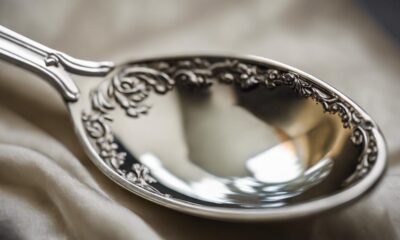
 Vetted42 mins ago
Vetted42 mins ago15 Best Silver Polish Brands to Make Your Silver Shine Like New
-
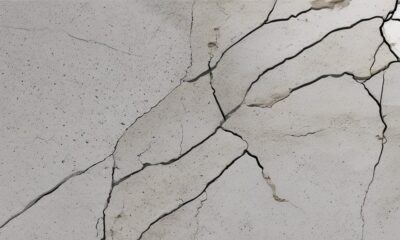
 Vetted5 days ago
Vetted5 days ago15 Best Fillers for Concrete Cracks – Expert Recommendations and Reviews
-

 Vetted1 week ago
Vetted1 week ago15 Best Plants for Large Pots to Transform Your Outdoor Space
-

 Vetted6 days ago
Vetted6 days ago15 Best Fairy Lights to Transform Your Space With Magical Illumination
-

 Vetted1 week ago
Vetted1 week ago15 Best Folding Beds for Small Spaces – Space-Saving Solutions for Comfort and Convenience
-

 Vetted1 week ago
Vetted1 week ago15 Best Waterproof Flooring Options for Your Bathroom – Ultimate Guide & Reviews
-

 Vetted2 weeks ago
Vetted2 weeks ago15 Best Grocery Carts to Make Shopping a Breeze
-

 Vetted1 day ago
Vetted1 day ago15 Best Subfloor Options for Your Basement Renovation – Ultimate Guide

















